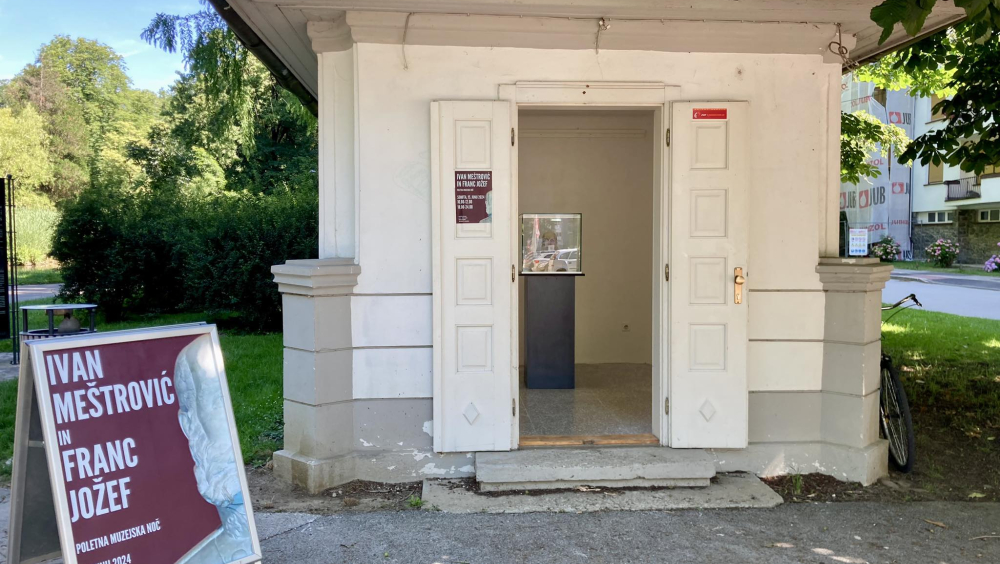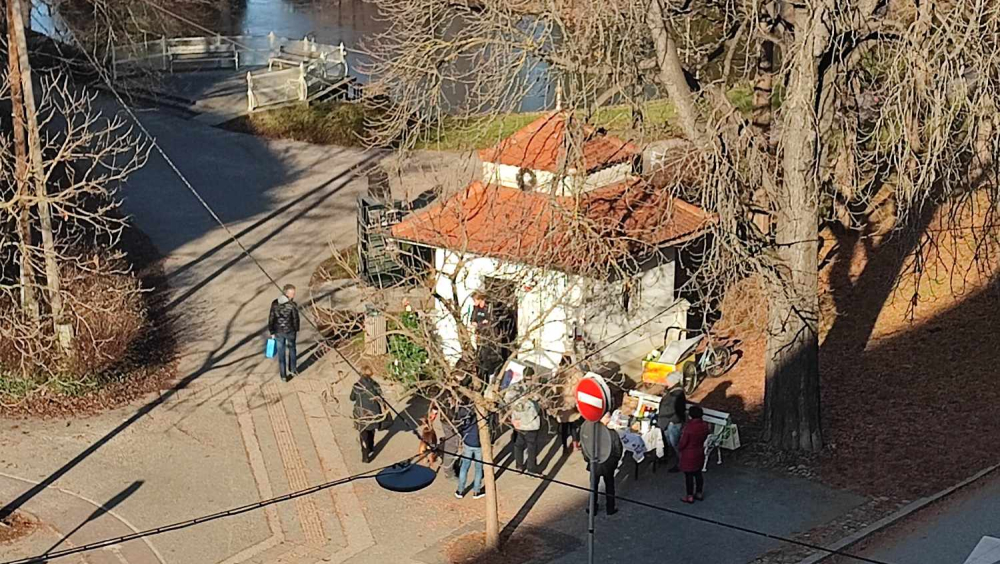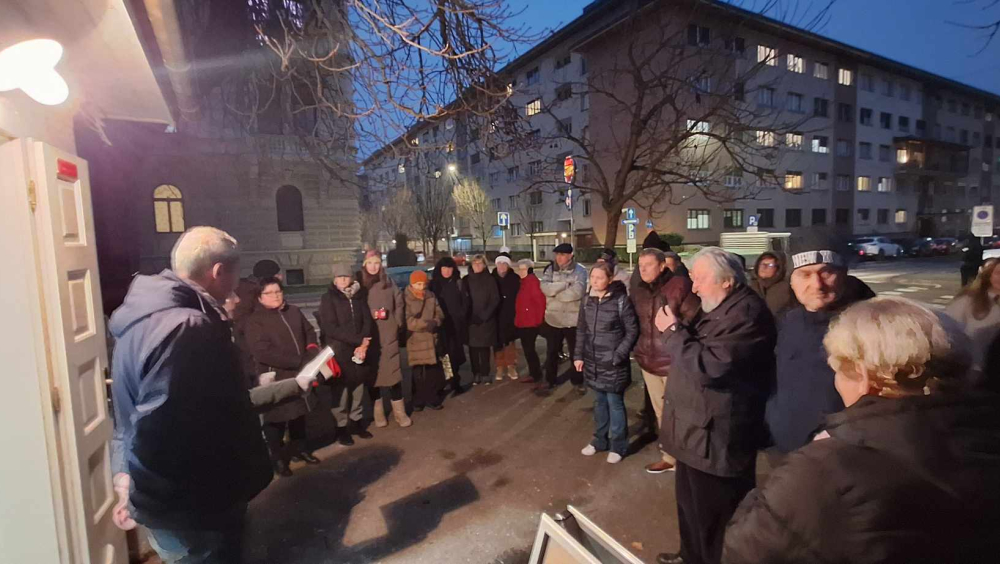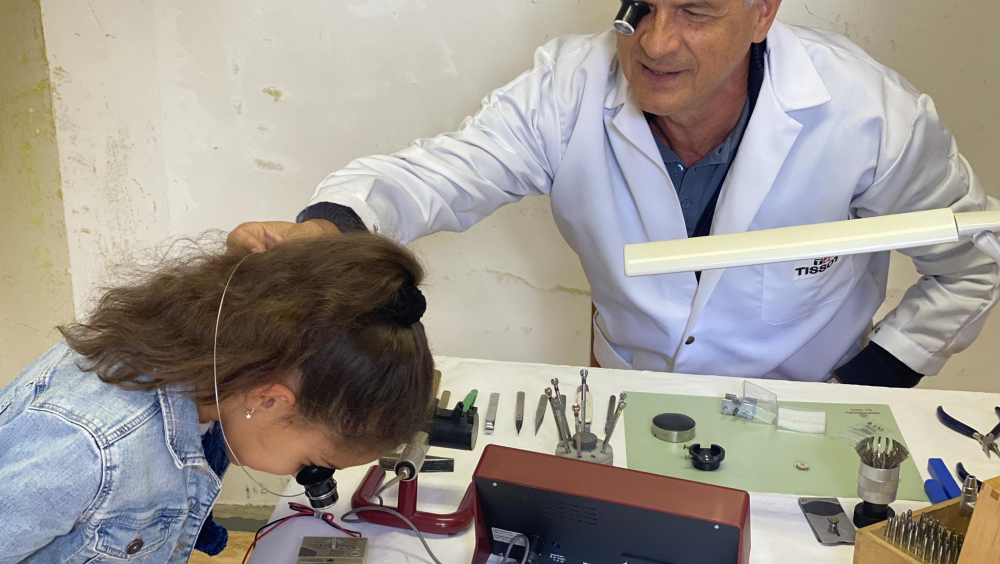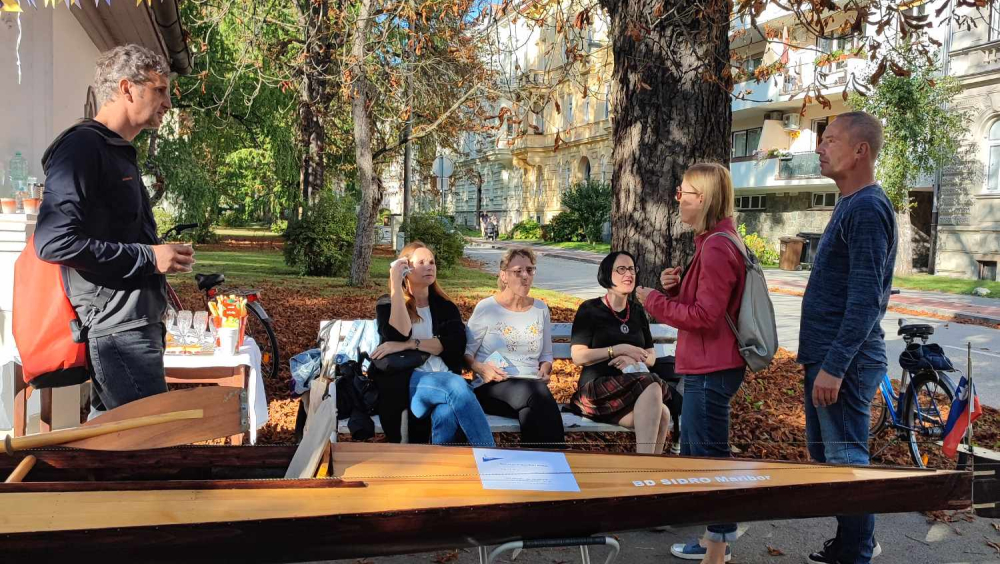A SMALL HOUSE OF GREAT EVENTS
Maribor’s small 7.70 m² kiosk, located at the edge of the city park, has a rich history. Built about a century ago, it originally served as a shop for newspapers, tobacco, and other essentials but also became a social hub for exchanging news and gossip. Over time, kiosks like this lost their community role and functioned primarily as retail outlets. The park kiosk operated until the late 1970s, later housing various businesses such as an antiquarian bookstore, a photography studio, and a pet treat shop before falling into disuse for over a decade.
In 2022, a group of enthusiasts from different professions founded the Trafika Association to revive the kiosk as a cultural and historical meeting place. Since then, it has hosted exhibitions, historical walks, children’s workshops, film screenings, and other events, welcoming over 6,000 visitors. The association collaborates with numerous cultural institutions, including museums in Maribor, Laško, Brežice, and Zagreb, expanding its impact beyond Slovenia.
The kiosk is now a recognized gateway to the City Park and a community hub. It participates in European Heritage Days, celebrating architectural heritage and fostering connections between Maribor and other cities. Future projects include partnerships with the Maritime Museum of Piran and Croatian institutions.
Through research, exhibitions, and community engagement, the Trafika Association ensures that the kiosk not only preserves the past but also serves as a bridge to the future, proving that even the smallest places can have a big impact.
They say that size doesn’t matter and that great things come in small packages. Both statements hold true for the tiny 7.70 m² house on the edge of Maribor City Park. In addition to being a green oasis of the city, Maribor City Park is also a cultural monument and a natural treasure.
The former masonry kiosk was built about a hundred years ago and originally served as a shop for newspapers, tobacco, cigarettes, stamps, and other small necessities for the city’s residents. However, this charming little kiosk was more than just a store; it was also a meeting place, a space for debating current events, exchanging news, and even gossiping. According to the local newspaper Mariborski večernik Jutra on January 4, 1933, it was even a discreet drop-off point for stolen goods, allowing criminals to avoid the hand of justice: “The person who, on Monday morning at 7:30 AM, requested from the driver of bus no. 1 at the Jadran café a lady’s handbag should bring it to the kiosk in the park, as they have been identified.”
Kiosks of this type were not unusual in the early 20th century. Maribor had two, both of which have fortunately been preserved and are now under museum protection. One is managed by the Museum of National Liberation Maribor, while the other has been taken over by the Trafika Association. Later, masonry kiosks and those within buildings were joined by wooden and aluminum ones, and by the late 1960s, the famous plastic K67 model, which even found its place in New York’s MoMA.
Over the decades, these kiosks gradually lost their social function, remaining only as outlets for newspapers, magazines, cigarettes, lottery tickets, stamps, tissues, and countless other items. The kiosk by the park continued to function as a shop until the late 1970s. After that, the little house by the park hosted various other activities, from an antiquarian bookstore to a photography studio and a pet treat store. Eventually, these businesses faded away, and the beauty on the edge of the city’s green oasis shut its doors for over a decade.
In 2022, a group of enthusiasts from diverse professions (museum curators, heritage conservators, teachers, journalists, librarians, cultural workers …), united by our love for our city and its heritage, founded an association to awaken this small house from its long slumber. We began organizing exhibitions, historical walks, children’s workshops, film screenings, and other events. Slowly, the kiosk once again became what it was at its inception—a meeting place for people and their precious stories, a guardian of the city’s past, and a preserver of its tangible and intangible heritage. In these nearly three years of operation, we have become builders of community and facilitators of social gatherings, initially within our association and now more broadly.
We actively collaborate with other cultural and heritage organizations, both public and non-governmental, including the Regional Museum Maribor, Museum of National Liberation Maribor, Photography Museum, Maribor Art Gallery, Photography Society, Hiša Association, Vetrinjski dvor, Narodni dom Maribor, Maribor Puppet Theatre, Pivec Publishing House, media house Večer, the Regional Studio of RTV Slovenia, the Institute for the Protection of Cultural Heritage of Slovenia, and others. Our work extends beyond the local level, reaching national and European dimensions, connecting us with other towns and neighboring countries. We have already conducted joint projects with the Laško Museum, the Posavje Museum Brežice, and the Museum of the City of Zagreb in Croatia.
So far, over 6,000 people have attended our events, most coming with a purpose rather than just as accidental visitors. They have embraced Trafika as their own—a kind of gateway to the City Park, a space for gathering and connection, which was our primary goal. In just the past year, we organized more than 30 events, attended by over 3,000 visitors.
“The Trafika Association has completely amazed me today with its mini-exhibition, grand vision, and wonderful program. Be a light yourself. Maribor is the Future!” —Mirjana Š., visitor of the LIGHT exhibition featuring the lamp collection of academic painter Bogdan Čobal
Since 2023, we have also been participating in the European Heritage Days. In collaboration with the Sidro Boating Association, we presented the oldest Maribor kayak near our little house, even allowing it to make an honorary lap in the park’s smallest pond. Additionally, Maribor’s most famous watchmaker set up a temporary workshop in the kiosk, introducing visitors to a slowly vanishing craft. The following year, we partnered with the “sister” kiosk by the Main Bridge and established connections with a similar kiosk in Zagreb, managed by the Museum of the City of Zagreb. We have already introduced our work to this museum and plan to collaborate on multiple projects in the future, extending our reach beyond Slovenia and into Croatia.
We are also preparing a collaboration with the Maritime Museum of Piran, where we will host an exhibition on the Maribor ship. This exhibition will later travel to Rijeka and Pula, marking yet another partnership with Croatian cities.
Connection enriches us—our guiding principle is to collaborate, not compete.
Architectural heritage is the overarching theme of the European Heritage Days in Slovenia, celebrated under the slogan Walls of Our Past, Foundation of Our Future. This is an excellent opportunity to explore heritage, so this autumn, we will dedicate our focus to our own Trafika. Surprisingly little is known about this building, so with the help of experts, we will delve into research and present our findings in an exhibition. However, we will not neglect the memories of our city’s residents. Without the stories that give buildings their soul and life, they are just walls and roofs. We will collect these memories—written accounts, video recordings, audio recordings, and material artifacts—and present them to the public, ensuring they are not forgotten.
Let their windows into the past be our doors to the future.
Although our kiosk is a small building of local significance, its history is filled with numerous stories that contribute to the broader mosaic of shared heritage—not only on a local level but also within the region and across borders. Through our events and activities, we create connections that extend beyond Maribor, reinforcing the idea that cultural heritage is a collective European treasure.
The kiosk's location is nearly perfect. Situated at the edge of the City Park—Maribor’s green oasis and lungs since the late 19th century—it serves as a gateway to nature and tranquility. In a world that rushes ahead at every turn, where time seems to slip away ever faster, places like this offer much-needed respite. Not only for local residents but for all visitors seeking a moment of peace. Sustainable and green tourism is the future, and our kiosk, though small, is an integral piece of this vision. It is a place of encounters, intergenerational and inter-institutional creativity, and a hub for cultural exchange.
By passing on knowledge to future generations, we strengthen European values and continuously explore new approaches to heritage education, learning, and creativity. Most importantly, we have given this historic little house a renewed purpose, proving that heritage is not just about preserving the past but about shaping a meaningful future. At the heart of our story are people—our ideas, creativity, enthusiasm, and shared values—demonstrating that cultural heritage is alive, evolving, and a powerful force for community building.
